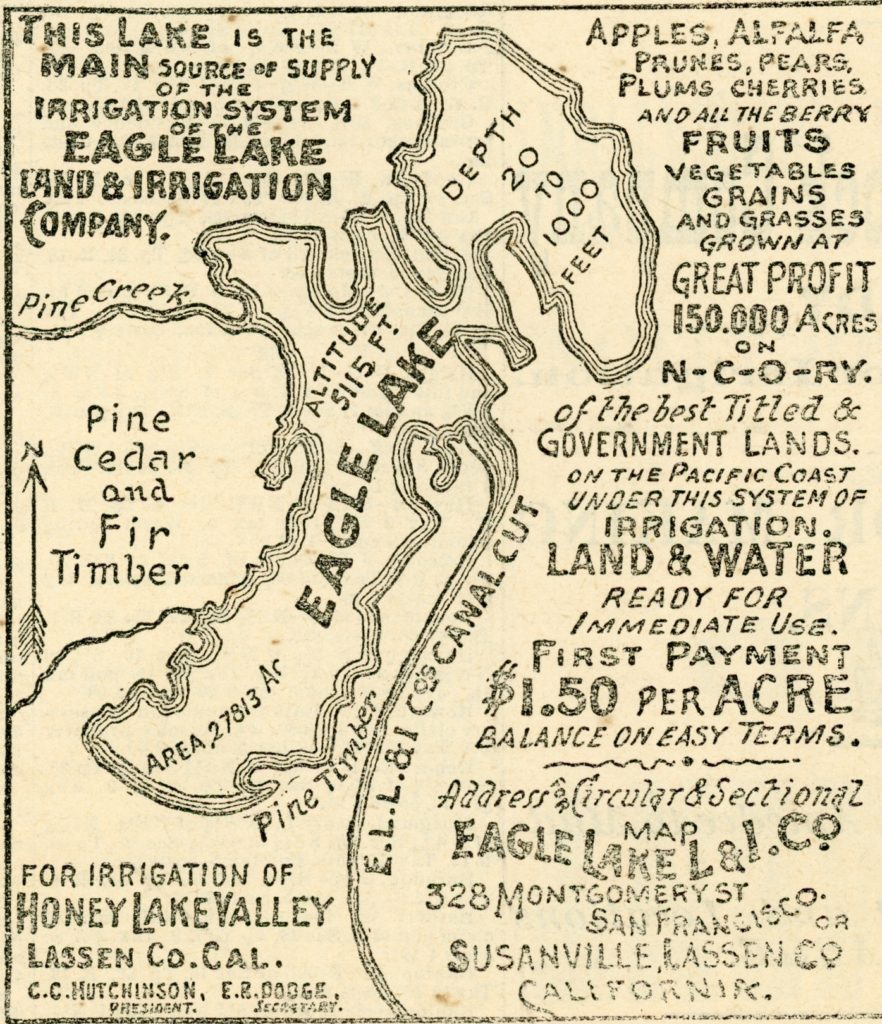
In 1891, the Eagle Lake Land & Irrigation Company was organized to resurrect Merrill’s Eagle Lake enterprise. They had a two-prong approach. The first was to install a pumping plant at the lake, along with the needed canal system stretching all the way to Amedee in eastern Honey Lake Valley. Once put in place, they would receive revenue from the sale of water that in turn could be used to complete the tunnel construction. Oddly enough, the company would start work on the tunnel from the lake side, whereas Merrill’s tunnel was on the Willow Creek side, but that work did not begin until the fall of 1892, after the pumping plant was installed and in working order.

By the spring of 1892, work was well under way. While waiting for their order the machinery of the pumping, there was another essential element ditches needed to distribute the water. Like Merrill’s plan, Willow Creek would provide the main conduit to deliver the water to the Honey Lake Valley. From the pumping plant to Merrill’s tunnel and the headwaters of Willow Creek would require two miles of ditches—there remains some interesting rock work. From Belfast to the other side of Amedee a twenty-one mile ditch was constructed.
In early June 1892, some twenty-one tons of equipment for the pumping plant arrived by rail at Amedee. The company had purchased a Hooker Hydraulic pump. The 80-horsepower boiler had the capacity to move 60,000 gallons of water per-minute.
On September 15, 1892, the moment of truth had arrived when the pump first tested. By October water from Eagle Lake was flowing all the way to Amedee. This was a tremendous achievement and proving to the naysayers it could be done.

Four months later in February, everything would come to a crashing halt with the Financial Panic of 1893. There are some historians who believe that this far worse than the Great Depression of the 1930s. Whatever the case may be, it was the beginning of the end of the Eagle Lake Land & Irrigation Company, who would never see if their was project would be successful. Heavily in debt, numerous lawsuits filed by creditors left the company bankrupt. The pumping plant remained idle, and portions were slowly hauled away. The last was a six-ton boiler brought to the Wilson sawmill in Susanville in 1904. However, today the crumbling cement foundations still remain.